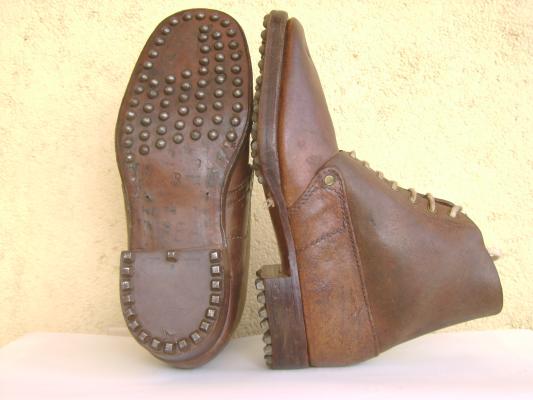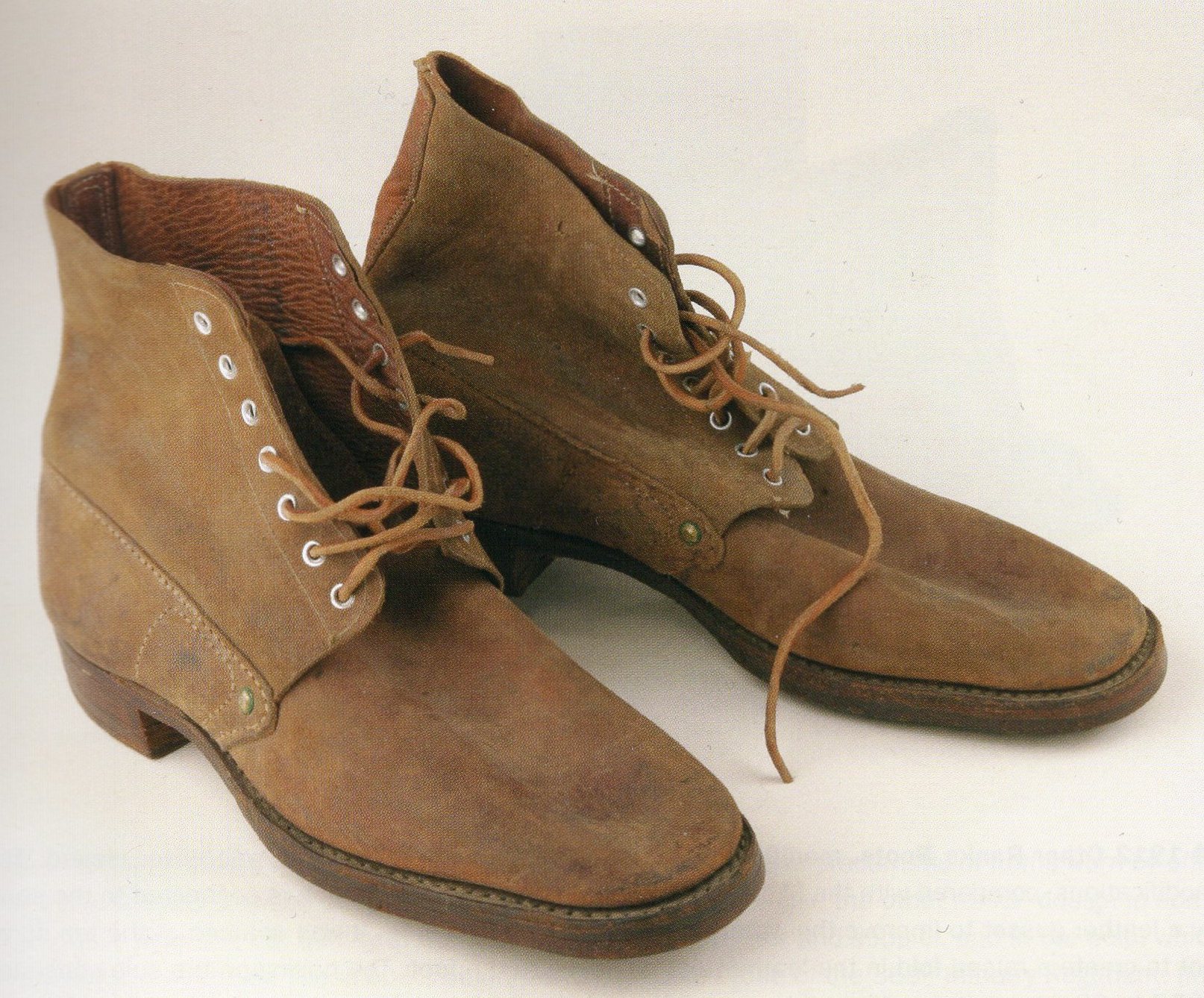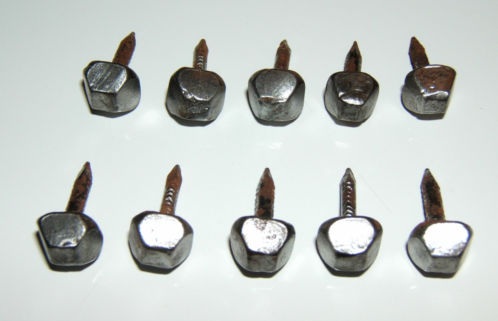Footwear
The French infantry boot of the Great War went through an evolution which began even before the start of the war. Several models of boot were in use between 1914 and 1918.
Note: All images used without permission. Original sources are cited at bottom of page.
Model 1893:
While the predecessor to the model 1893 was the model 1881, in actual design very little had changed from the Napoleonic boot of old. The boot was between 160-180 mm high (the height was depending on shoe size). The outsoles had 88-98 rounded hobnails (again, depending on shoe size), 8 mm in diameter. There were six regularly spaced copper eyelets. The laces were leather. The boots are distributed in their natural (fawn) leather and were blackened by the soldier upon receipt. The weight of the boot was 2 kg (4.4 lbs).
Model 1912:
The model 1912 boot took into account many of the soldier's complaints about the previous model. The height of the upper was lowered to 130-147.5 mm and the curve was accentuated on the in-step. A seventh eyelet (now made of Japanned copper) was added and the eyelets themselves irregularly spaced in order to improve lacing. In theory, the black leather laces were replaced with fiber laces though leather laces were still predominant. The number of hobnails was decreased to between 57-88 (these were 7 mm in diameter), with a space left on the outside of the sole corresponding to location of the little toes. The weight of the boot is reduced from 2 kg to 1.2 kg (2.6 lbs). Starting with the model 1912, the boots were blackened before distribution to the troops.
**Both the model 1893 and model 1912 boots were distributed in August 1914, with the former being predominant. The 1912 boot was distributed mainly to the youngest classes (active army). At mobilization, the Quarter-Master had a stock of approximately 1,800,000 pairs of boots.**
Model 1912/15:
The model 1912 modified '15 was created by decree on 18 April 1915. In order to help make the boot more watertight, gussets (made of sheepskin) were added to either side of the tongue, so that the tongue was now attached to the upper of the boot. At first the gussets were sewn along the underside of the tongue. But this extra layer proved abrasive to the foot, so from August 1915 on, the gusset was sewn along the topside. Additionally, the heel was reinforced with 15 "squared" (trapezoidal) hobnails. Though rarely implemented, some boots also had a supplementary interior row of hobnails added to the heel of the left foot. The idea was that the sound produced would help keep the soldier in cadenced step. While in theory the boots were to be issued with fabric laces, leather laces remained the norm throughout the war.
Model 1912/16:
The model 1912 modified '16, following the decree of 7 March 1916, would see the introduction of a tubular copper rivet placed at the joining point of the upper, the vamp and the back. While boot polish did not cease to be issued by the French army, the regulations stipulating that the boots must be maintained polished were relaxed due to the infeasibility of maintaining them in the trenches. Soldiers would however have to ensure they were blackened for dress parades and inspections for troops whose officers followed regulations strictly. Naturally, the wet and muddy conditions in the front lines implied that the color wouldn't last long and the modern conventional belief has developed that after 1916 many troops stopped blackening their boots all together except when specifically ordered to for inspections and dress occasions. Whatever the case may be, when the boots were first issued the men would likely have to blacken them with the color naturally fading, until such time as the man could clean and blacken them again for when the occasion called. Photographic evidence would seem to support this theory.





Model 1917:
The model 1917 (decreed 20 November 1917) height of the upper was raised to between 150-175 mm. This was to assist in facilitating a better overlap between the leg wraps and the top of the boots. As an economizing measure, the tongue side gussets were made in one single piece connected across the top of the tongue and the back of the boot was made in two assembled parts with an exterior rod. The number of hobnails under each heel was changed to 20-25. Finally, since July 1917, the eyelets were made of zinc or aluminum in addition to copper.








